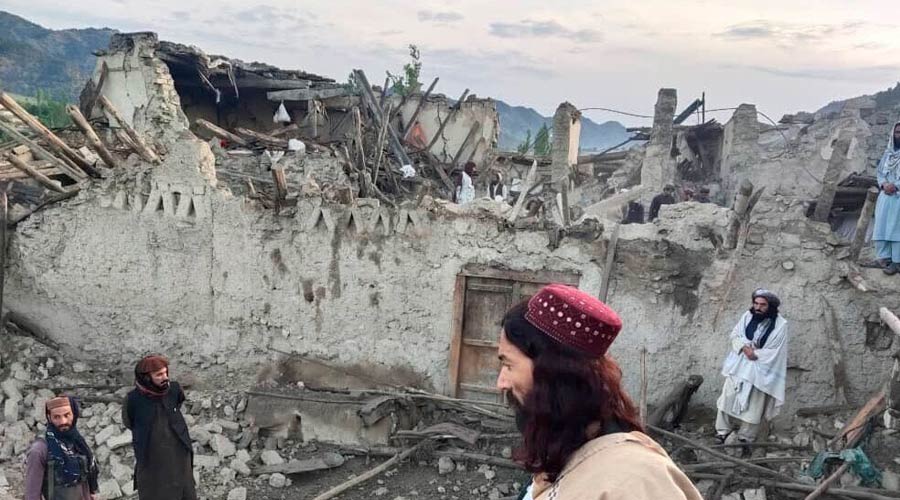
A strong earthquake wreaked havoc in a remote border region of Afghanistan overnight on 21st June, killing at least 1,000 people and injuring many more. Officials state that the toll is expected to increase as rescuers look through the collapsed buildings and debris.
The 5.9 magnitude earthquake was most severe in the country’s east, where residents already suffer harsh lives in a humanitarian crisis made worse by the Taliban takeover in August.
Damages to the regions
“People are digging grave after grave,” said Mohammad Amin Huzaifa, who is the head of the Information and Cultural Department in Paktika– adding that at least 1,000 people have died in that region alone.
“It is raining also, and all houses are destroyed. People are still trapped under the rubble,” He continued. (simplyearth.com)
The country’s supreme leader, Hibatullah Akhundzada, warned that the death toll would probably continue to grow as reports of casualties come in from difficult-to-reach locations in the mountains.
A tribal chief from Paktika earlier said that rescuers and survivors were rushing to aid those in need.
“The local markets are closed and all people have rushed to the affected areas,” Yaqub Manzor said to the AFB via telephone.
Photographs and videos of badly damaged houses in remote rural areas can be seen as posts on social media. Some videos also showed locals aiding with loading casualties into a military helicopter.
The United Nations and European Union were quick to offer assistance
Even before the Taliban took over the country, its emergency response services were vastly overlooked– this was because of the natural disasters that the country frequently had to deal with.
However, any rapid response to the most recent calamity is further constrained because there are now so few airworthy planes and helicopters remaining in existence since the hardline Islamists retook power.
Anas Haqqani, a senior Taliban officer, tweeted, “The government is working within its capabilities.”
“We hope that the International Community & aid agencies will also help our people in this dire situation.” He continued.
The United Nations and European Union were quick to offer assistance in this regard.
The UN Office for the Coordination of Humanitarian Affairs (UNOCHA) in Afghanistan tweeted, “Inter-agency assessment teams have already been deployed to a number of affected areas.”
“The EU is monitoring the situation and stands ready to coordinate and provide EU emergency assistance to people and communities,” tweeted Tomas Niklasson, the EU special envoy for Afghanistan.
Earthquakes are frequent in Afghanistan
Afghanistan is frequented by earthquakes– especially in the Hindu Kush mountain range, which is close to the junction of Eurasian and Indian tectonic plates.
Dozens of people were left dead and injured back in January when two devastating earthquakes struck rural areas in the western province of Badghis, leaving structural damages everywhere in the region.
When a 7.5-magnitude earthquake struck Pakistan and Afghanistan in 2015, more than 380 people died, with Pakistan bearing the brunt of the toll.
Pope Francis sent prayers to the victims of the most recent earthquake from the Vatican.
“I express my closeness with the injured and those who were affected,” said the pontiff at the end of his weekly audience.
In order to tackle its ongoing humanitarian crises, the United Nations and aid organizations estimate that Afghanistan needs billions of dollars this year.
According to aid organizations, there is a need for greater disaster preparedness in Afghanistan. The country remains incredibly vulnerable to natural disasters like frequent earthquakes, floods, and landslides.
The earthquake was felt as far away as Lahore in Pakistan, which happens to be 300 miles from the epicenter, according to the USGS and European Mediterranean Seismological Centre (EMSC) websites.
